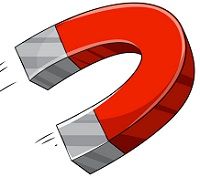Magnetic Stimulation Helpful in Stroke Rehab
A recent study found that daily, repetitive transcranial magnetic stimulation (rTMS) is safe and may help subacute stroke patients regain motor control in the paralytic hand.

A recent study found that daily, repetitive transcranial magnetic stimulation (rTMS) is safe and may help subacute stroke patients regain motor control in the paralytic hand. The research was conducted by Koichi Hosomi, MD, PhD, of the Department of Neuromodulation and Neurosurgery, at Osaka University Graduate School of Medicine, in Japan, and colleagues and was recently published in the Journal of Stroke and Cerebrovascular Diseases.
Two types of rTMS have been advocated for improving the functional outcome for stroke patients with motor disturbance. The first, say the authors is “low-frequency rTMS (1Hz or less) to the contralesional primary motor cortex (M1) area to decrease excessive excitability and thus decrease excessive interhemispheric inhibition to the ipsilesional side.” The second, “involves high-frequency rTMS or excitatory stimulation, to facilitate the decreased cortical excitability on the stroke-affected side,” they say.
“As functional recovery after stroke is said to be most pronounced in the period within 3 months after onset, we postulated that rather than rTMS at the chronic stage, the add-on effects of rTMS may be greater when it is applied at an earlier stage.” In order to find out, they designed the present study, which they describe as “a randomized, double-blind, parallel study to test the hypothesis that 10 sessions of daily rTMS, combined with regular rehabilitation, improve the results of recovery of motor function in subacute stroke patients.”
“The primary outcome was motor recovery evaluated by the Brunnstrom stages (BS)” say the researchers, adding, “the secondary outcomes were improvement in the Fugl-Meyer Assessment (FMA), grip power, National Institutes of Health Stroke Scale (NIHSS), Functional Independence Measure (FIM), a quantitative measurement of finger tapping movement, and the incidence of adverse events.” A total of 39 patients completed the study and 18 received real stimulation, while received 21 sham stimulation.
The patients receiving real stimulation showed improvement in the BS hand score, the handgrip strength score, the NIHSS motor arm score, and the number taps, as well as the FMA distal upper limb score. “However, it did not show an effect on motor recovery in the paralytic leg, or scores for activities of daily living,” report the researchers.
The researchers conclude that “daily high-frequency rTMS of the ipsilesional M1 is tolerable and modestly facilitates motor recovery in the paralytic hand of subacute ischemic and hemorrhagic stroke patients.” Additionally, they suggest that additional studies should be conducted in order to discover the most effective conditions for the therapy in the practical clinic setting.
Further Coverage:
Magnetic Stimulation Improves Motor Function in Stroke Patients
Motor Cortex Stimulation Provides Long-Term Analgesia for Neuropathic Pain
Study: Magnetics Help Traumatic Brain Injury Headaches